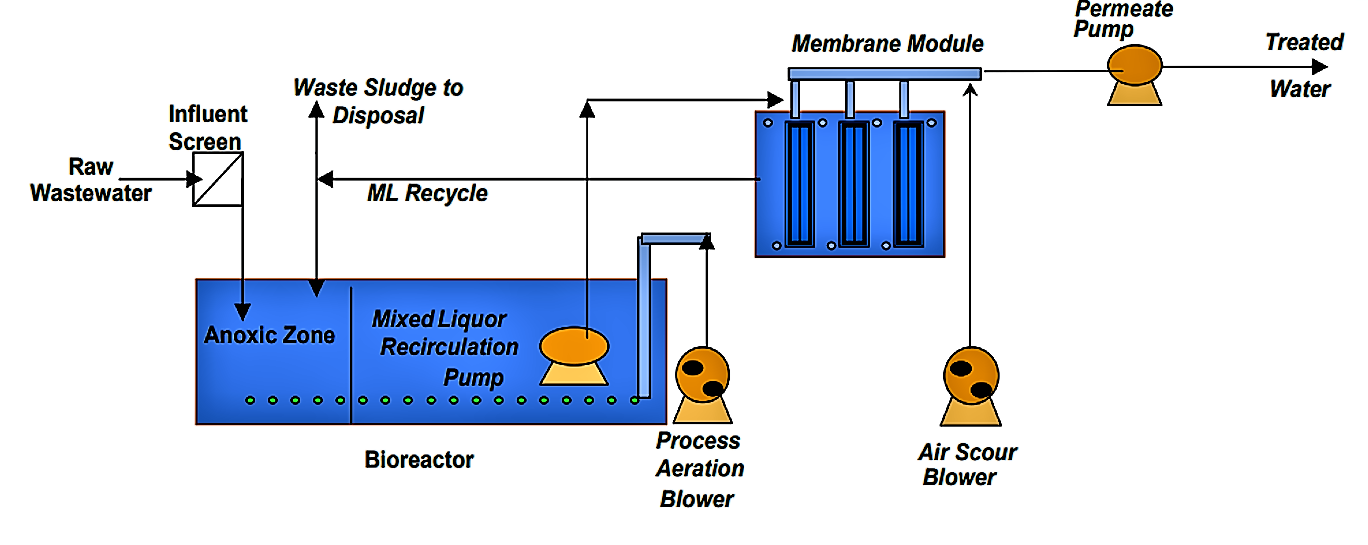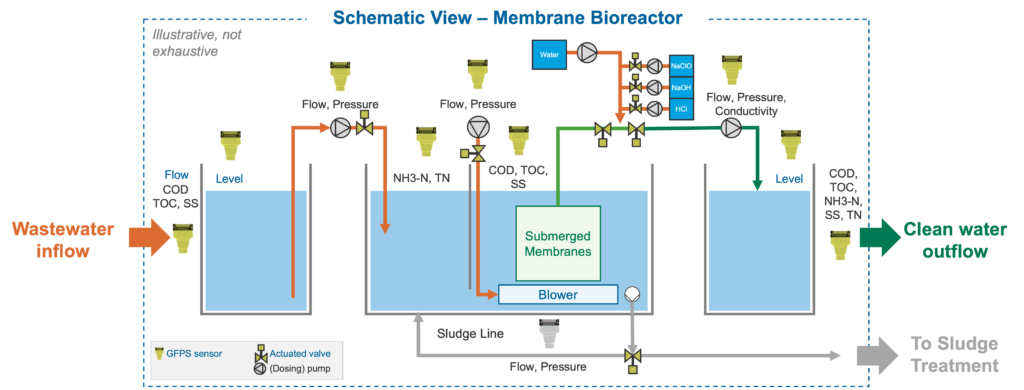The Science Behind Membrane Bioreactor: How It Works and Why It’s Effective
The Science Behind Membrane Bioreactor: How It Works and Why It’s Effective
Blog Article
Membrane Layer Bioreactors Described: Reliable Solutions for Clean Water
Membrane bioreactors (MBRs) have become an innovative solution for resolving journalism difficulties of wastewater treatment. By incorporating organic procedures with innovative membrane purification, MBRs not just boost the quality of treated water but likewise lower the spatial requirements of treatment centers. As environmental problems heighten, the duty of MBR technology in promoting sustainable water management becomes progressively considerable. The intricacies of their procedure, benefits, and prospective applications merit a closer evaluation to fully understand their influence on the future of water therapy.

What Are Membrane Bioreactors?
Membrane layer bioreactors (MBRs) are sophisticated wastewater treatment systems that combine organic deterioration processes with membrane layer filtering innovation. This integration enables the effective elimination of contaminants from water, making MBRs a recommended selection in different applications, consisting of local wastewater treatment and commercial effluent administration.

Among the vital benefits of MBRs is their capability to create high-grade effluent, commonly appropriate for reuse in watering or industrial procedures. Additionally, MBRs need a smaller sized footprint compared to traditional treatment systems, making them suitable for urban setups where space may be restricted.
Furthermore, MBRs can properly deal with differing influent lots and are less prone to the results of harmful shocks. These features add to their growing appeal as a lasting solution for attending to the raising need for tidy water while reducing ecological influences.
How Membrane Bioreactors Job
While the procedure of membrane layer bioreactors (MBRs) may seem complicated, it basically focuses on the synergy between biological processes and membrane layer purification. MBRs incorporate a biological therapy process, typically triggered sludge, with a membrane layer splitting up unit to treat wastewater effectively.
In an MBR system, wastewater is very first presented right into a bioreactor where microbes weaken raw material and other contaminants. The biological activity reduces the concentration of pollutants while promoting the growth of biomass. Following this biological treatment, the mixed alcohol undergoes membrane layer purification, which can be microfiltration or ultrafiltration, relying on the wanted effluent top quality.
The membrane layers function as a physical obstacle, enabling water and little solutes to pass while keeping suspended solids and larger molecules. This enables the system to keep a high focus of biomass within the activator, improving the treatment efficiency.
Moreover, the continual splitting up of cured water from the biomass helps with a small design and minimizes the impact of the therapy facility. In general, the combination of organic deterioration and membrane filtration in MBRs causes trustworthy and efficient wastewater treatment, making certain top notch effluent appropriate for various applications.
Benefits of MBR Innovation
Among the key benefits of membrane bioreactor (MBR) technology is its capacity to create high-quality effluent with a considerably lowered footprint contrasted to traditional wastewater treatment techniques. MBR systems efficiently incorporate biological therapy and membrane purification, resulting in premium removal of impurities, including put on hold solids, microorganisms, and raw material. This capacity results in effluent that usually fulfills or surpasses stringent regulative standards for reuse and discharge.
Furthermore, MBR modern technology permits greater biomass concentrations, which improves the therapy efficiency and decreases the called for reactor volume. This small layout is particularly helpful in urban areas where area is restricted. The operational versatility of MBR systems additionally means they can adjust to differing influent qualities and flow rates, making them ideal for a variety of applications.
Additionally, the lowered sludge production related to MBR procedures adds to lower functional and upkeep prices. The membrane layers function as a physical barrier, lessening the risk of obstructing and other allowing longer functional periods between cleansing. Overall, the benefits of MBR modern technology make it an eye-catching option for lasting wastewater therapy, addressing both ecological problems and the need for effective source monitoring.
Applications of Membrane Layer Bioreactors
With their flexibility and effectiveness, membrane bioreactors (MBRs) locate applications across various sectors, including local wastewater therapy, commercial processes, and also water recovery. In community setups, MBRs provide a small service for dealing with wastewater, efficiently removing contaminants while concurrently producing top notch effluent that meets strict regulatory requirements. This makes them especially appropriate this article for locations with limited space.
In commercial applications, MBR technology is utilized for treating procedure water, particularly in sectors such as food and beverage, pharmaceuticals, and petrochemicals. These industries take advantage of MBRs' capacity to handle high organic lots and their effectiveness in recouping useful sources from wastewater, such as nutrients and water.
Moreover, MBRs play a critical role in water reclamation campaigns, allowing the reuse of dealt with wastewater for watering, industrial procedures, or even as drinkable water after further treatment (Membrane Bioreactor). Their effectiveness in removing contaminants and pathogens makes them a reputable selection for making certain water top quality in different reuse applications
Future of Water Therapy Solutions
The future of water therapy services is poised for transformative advancements driven by technical development and increasing ecological recognition. As worldwide water deficiency ends up being a pushing issue, brand-new techniques, consisting of membrane bioreactor (MBR) systems, are readied to play a crucial function in boosting the efficiency and sustainability of water therapy procedures.
Arising innovations such as artificial intelligence and device discovering are anticipated to maximize therapy procedures, permitting real-time monitoring and predictive upkeep. This will certainly improve the overall reliability and performance of water therapy facilities. Moreover, innovations in membrane layer products, such as graphene and nanofiltration, guarantee to boost permeation rates and decrease fouling, bring about reduced power consumption and operational expenses.
Additionally, the integration of renewable resource sources right into water treatment plants will contribute to greener web link methods. The circular economy model will certainly likewise get grip, urging the recovery of important resources from wastewater, such as nutrients and power.
Conclusion

Membrane layer bioreactors (MBRs) have emerged as an innovative remedy for attending to the pushing difficulties of wastewater treatment. By incorporating organic processes with innovative membrane filtering, MBRs not just improve the top quality of treated water however additionally decrease the spatial needs of treatment facilities.One of the vital advantages of membrane bioreactor (MBR) modern technology is its ability to create high-quality effluent with a significantly decreased impact contrasted to conventional wastewater treatment approaches.With their versatility and effectiveness, membrane layer bioreactors (MBRs) locate applications across various markets, including metropolitan wastewater treatment, industrial processes, and also water improvement.In conclusion, membrane bioreactors represent a considerable innovation in wastewater therapy technology, integrating biological processes with effective membrane filtering to generate high-grade effluent.
Report this page